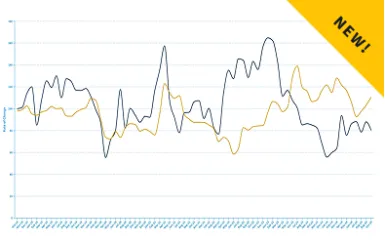U.S. Auto Sales Showed Signs Of Recovery In Third Quarter
The U.S. auto industry’s recovery gathered momentum in the third quarter, with sales at auto makers rebounding from coronavirus-related lows and buyers returning to showrooms.
Strong demand for trucks and sport-utility vehicles is driving the comeback, which is occurring faster than many had expected this summer. Also contributing is an increase in urban consumers turning to car ownership, as well as easier credit conditions that make car payments more affordable.
While sales at many car companies are still down compared with a year ago, analysts said the selling pace in September was expected to be closer to what it was earlier this year—before the pandemic brought business to a near-standstill this spring.
General Motors Co. GM +2.25% said Thursday its third-quarter U.S. sales fell nearly 10% from a year earlier, but the drop was narrower than the 34% decline posted in the second quarter, when all of its North American factories were idled temporarily to protect workers from the spread of the virus. GM has said its production has mostly returned to pre-pandemic levels.
The Detroit auto maker has benefited financially from surging demand for the big pickup trucks that have long been its sweet spot, as well as cost-cutting measures put in place years in advance.
Rival Fiat Chrysler Automobiles NV also reported a 10% drop in third-quarter U.S. sales, but the decline was slimmer than the 39% decrease it posted for the second quarter. Ford Motor Co. is expected to release its third-quarter sales Friday, and numbers from Tesla Inc. are also expected in the coming days.
Car-shopping website Edmunds.com estimates total U.S. auto-industry sales for the third quarter will still be down 11%, but that is an improvement from the nearly 31% plunge that occurred in the second quarter.
Leading the recovery is rising demand from consumers buying cars at dealerships, as opposed to fleet operators and other businesses that purchase vehicles in bulk and are still reeling from the crisis.
A shortage of available vehicles—a hangover from the car-factory shutdowns this spring—is helping to drive prices higher as car companies and dealers have pulled back on sales promotions and other discounts.
Check out the full article from the Wall Street Journal here.
Please Sign in to View
Log in to view member-only content.
If you believe you are receiving this message in error contact us at memberservices@rvia.org.

